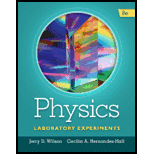
The input and output distances for a simple machine.
Answer to Problem 1EP
The input distance is greater than the output distancefor the given simple machine.
Explanation of Solution
The device which can alter the direction as well as the amount of an applied force to it for a process, is termed as a simple machine. Therefore, a simple machines are those physical devices used for apply force when the direction or the magnitude of the applied force and its distance is changed.
The amount of work done by a simple machine is defined as the force applied to the displacement of the object or the parallel distance at which the force is applied. In other words, the work done by the machine is the product of the force applied and the distance to which force is applied.
Write the expression for the work done by the machine.
Here,
Write the expression for the conservation of energy or work the machine.
Here,
Substitute
Here,
Simplify the above expression as:
Therefore, it is clear from the above expression that when output force is greater than the input force will make the input distance greater than the output distance for the machine.
Conclusion:
Thus, The input distance is greater than the output distance for the given simple machine.
Want to see more full solutions like this?
Chapter 15 Solutions
Physics Laboratory Experiments
- A cable weighing 4lb/ft is unwinding from a cylindrical tank. Find the work done by a force of gravity to unwind additional 300ft if 60 ft are already unwound. х. 25,200 ff - 1Ь Y. 2,500 ft – 1barrow_forwardCalculate the work done in lifting a 520-NN barbell 1.8 mm above the floor. Express your answer to two significant figures and include the appropriate units.arrow_forwardA tired squirrel( mass approximately 1kg) does push up by applying a force to elevate center-of-mass by 5 cm in order to do a 0.50 joule of work. If the tired squirrel does all this work in 2 sec. then determine the powerarrow_forward
- Save Answe A 65.0-kg file cabinet of is sliding down a rough ramp for a distance of 5.00 m as shown. The friction force on the box is 75.0 N. During this process, what is the work done on the cabinet by the normal force, in Joule? Use g = 10.0 m/s2. Your answer needs to have 3 significant figures, including the negative sign in your answer if needed. Do not include the positive sign if the answer is positive. No unit is needed in your answer, it is already given in the question statement. 5.0 m 15.0°arrow_forwardA 60 kg box is pushed 12 m across a horizontal floor by a horizontal force of 200 N. Thecoefficient of kinetic friction is 0.3.(a) How much work went into overcoming friction?(b) how much work went into accelerating the box?arrow_forwardA hoisting machine lifts a 3000 kg load a height of 8 m in a time of 20 s. The power supplied to the engine is 18 hp. Compute (a) the work output, (b) the power output and power input, and (c) the efficiency of the engine and hoist system.arrow_forward
- (a) Find the useful power output (in W) of an elevator motor that lifts a 2300 kg load a height of 30.0 m in 12.0 s, if it also increases the speed from rest to 4.00 m/s. Note that the total mass of the counterbalanced system is 10,000 kg-so that only 2300 kg is raised in height, but the full 10,000 kg is accelerated. (Enter a number.) 63016.6 (b) What does it cost (in cents), if electricity is $0.0900 per kW · h? (Enter a number.) centsarrow_forwardIf a constant force F is applied to an object, and the resulting movement of the objectis represented by the displacement vector d, then the work performed by the force isgiven by the ____ ______ of F and d.arrow_forwardCan a machine multiply input force? Input distance? Input energy?arrow_forward
- A chain of length 11 m and a mass per unit length of 0.6 kg/m initially lies coiled on the ground. Find the work done (in Joules) in raising one end of the chain to a height 15 m above the ground. Use g = 9.81 m/s² for the acceleration due to gravity. Write only the numerical answer in the box below. Do not include the units. To be graded correct, your answer must be correct to three significant digits. This question accepts numbers or formulas. Plot | Help | Switch to Equation Editor | Previewarrow_forward(1) What is, in MW, the power generated by a turbine that has a power coefficient equal to 0.24 when the wind speed is 10.3 m/s and the blades have a length of 34 m? Round off your answer to 2 decimal places and do not include the unit. (2) What is the length, in meters, of the blades of a turbine that generates 1.3 MW of power when the wind speed is 9.5 m/s. Assume a power coefficient of 0.36. Round off your answer to a whole number (no decimals) and do not include the unit. Using the equation: P= 0.5 * air density * Pie *R^2 * V^3*Cp CP= in MW air density is 1.3 kg/m^3 not 1.22arrow_forward(a) Calculate the force (in N) the woman in the figure below exerts to do a push-up at constant speed, taking all data to be known to three digits. ________ N (b) How much work (in J) does she do if her center of mass rises 0.280 m? _______ J (c) What is her useful power output (in W) if she does 21 push-ups in 1 min? (Should work done lowering her body be included? See the discussion of useful work in Work, Energy, and Power in Humans.) _______ Warrow_forward
 University Physics Volume 1PhysicsISBN:9781938168277Author:William Moebs, Samuel J. Ling, Jeff SannyPublisher:OpenStax - Rice University
University Physics Volume 1PhysicsISBN:9781938168277Author:William Moebs, Samuel J. Ling, Jeff SannyPublisher:OpenStax - Rice University
